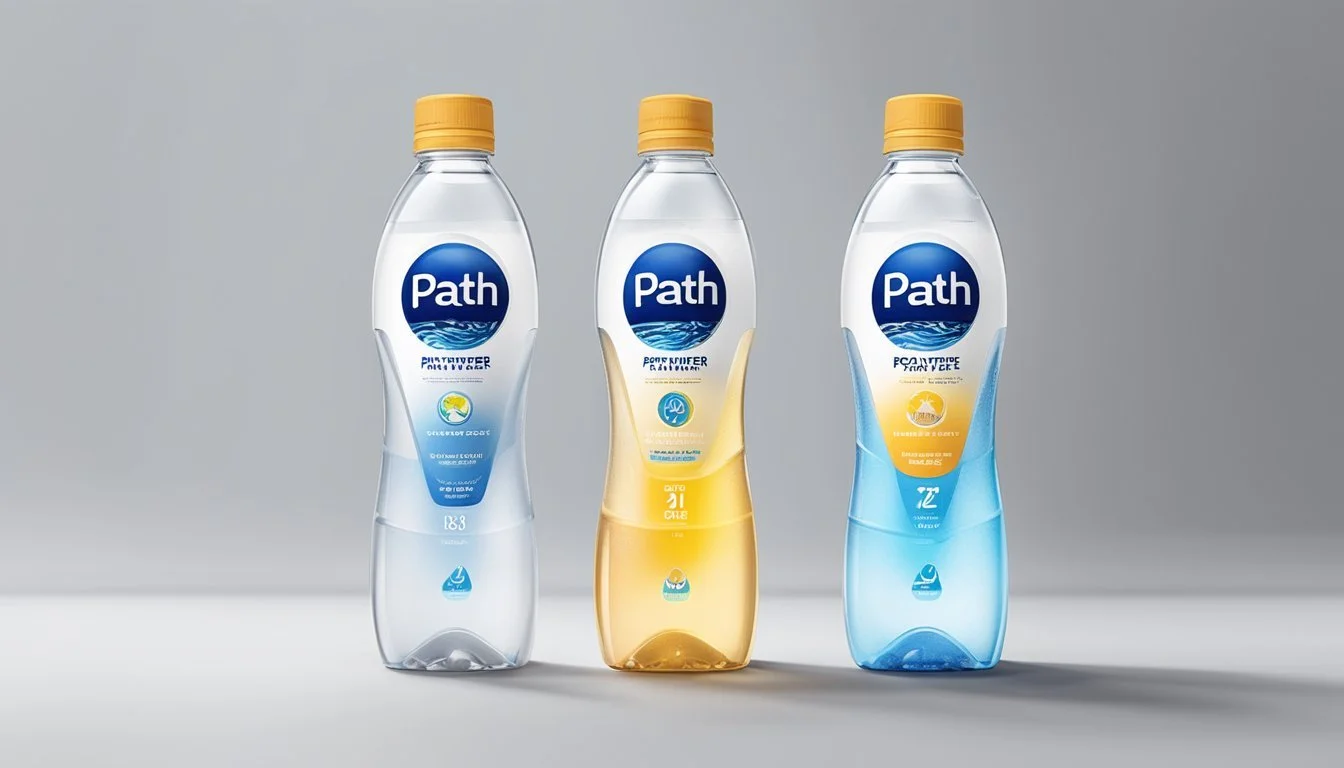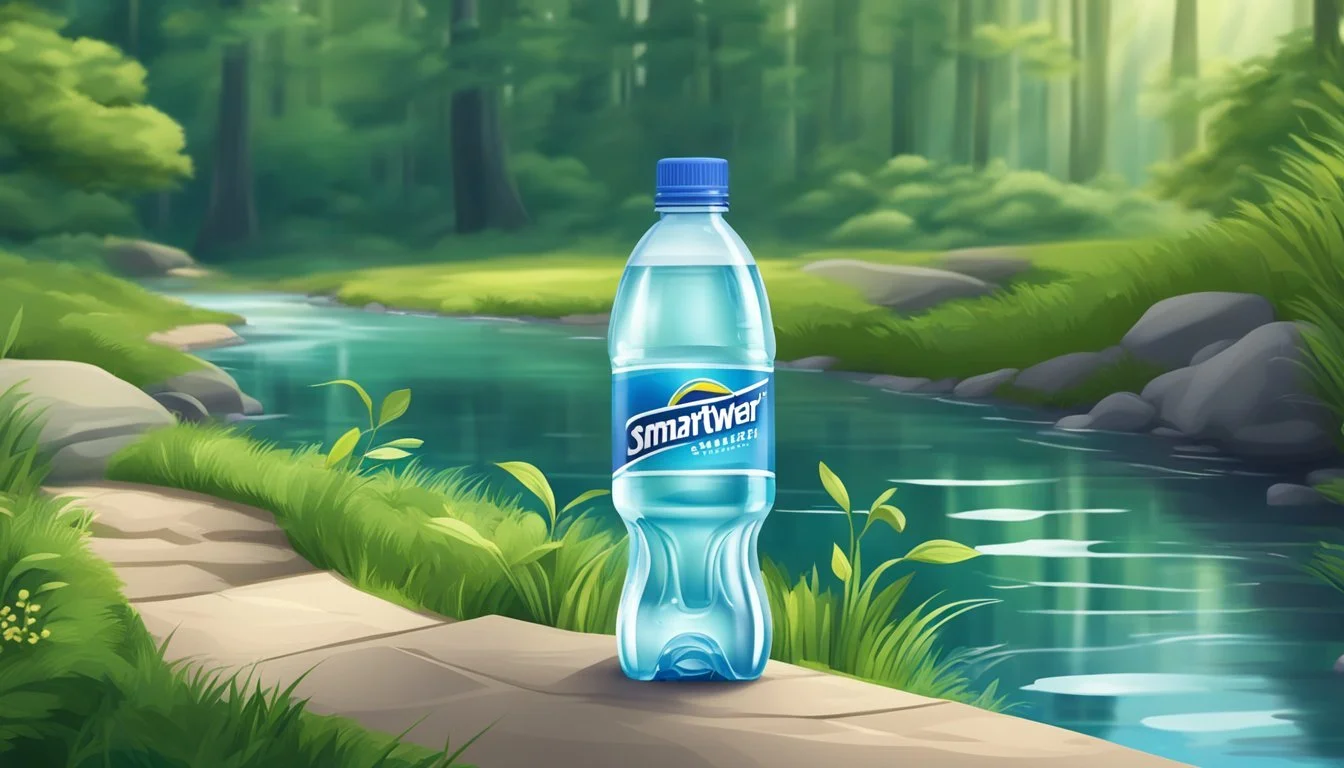Smartwater vs. Path
Comparing the Best Bottled Water
Choosing the right bottled water can be more challenging than it seems. With so many brands on the market, each claiming to offer superior hydration, consumers often find themselves at a crossroads. Smartwater, known for its vapor-distilled water and added electrolytes, competes closely with Path, a brand focused on sustainability and pure water quality.
Smartwater stands out for its clean taste and added electrolytes, making it a popular choice for those looking to stay hydrated throughout their day. On the other hand, Path offers a unique value proposition with its attention to eco-friendly packaging and commitment to reducing plastic waste.
When it comes to deciding between Smartwater and Path, the choice ultimately boils down to personal priorities: select Smartwater for superior taste and hydration benefits, or opt for Path to make a more sustainable and environmentally friendly choice. Whether you are a fitness enthusiast or an eco-conscious consumer, understanding the nuances of each brand can help you make an informed decision.
Understanding Bottled Water
Bottled water comes in various types, each appealing to different preferences and needs. Key factors such as categories, evaluation criteria for water quality, and regulatory standards are vital for consumers to make informed choices.
Categories of Bottled Water
Bottled water is classified mainly into several categories. Spring water originates from underground sources and naturally flows to the surface. Purified water undergoes a treatment process that removes impurities and contaminants. Mineral water contains a specific amount of natural minerals and must maintain this composition. There is also flavored water, which includes added flavors and sometimes sweeteners. Understanding these categories helps consumers identify the type of water that best meets their preferences and health needs.
Evaluation Criteria for Water Quality
Water quality is assessed based on several criteria. pH levels, which range from acidic to alkaline, are crucial; different health benefits are associated with various pH levels. The mineral content also significantly impacts water quality. Trace minerals like calcium, magnesium, and potassium contribute to hydration and overall health. Purity is another key factor; water brands often emphasize the removal of contaminants to ensure safety. Consumer preferences and taste can also play a role in determining the perceived quality of bottled water.
Regulatory Standards and Safety
The safety of bottled water is regulated by various standards. In the United States, the FDA (Food and Drug Administration) oversees the bottled water industry, ensuring that products meet strict safety and quality guidelines. Mineral and spring waters must maintain consistency in their natural composition. Further, bottled water must be tested for contaminants such as bacteria, chemicals, and heavy metals. Regulatory compliance ensures that consumers receive a product that is both safe and reliable, maintaining trust in the brands they choose.
This comprehensive approach to understanding bottled water ensures that consumers are informed about the different categories, quality criteria, and safety regulations essential for making the best choice.
Brand Profiles
The origins and offerings of Smartwater and Path provide a comprehensive view of what sets these two bottled water brands apart. Both have distinct histories, production processes, and product lines.
Smartwater: Brand Origin and Offerings
Smartwater is a product of Coca-Cola, launched in 1996. Its signature offering is vapor-distilled water, simulating the hydrological cycle for purity. Advanced filtration processes include vapor distillation, ensuring the removal of impurities, and the addition of electrolytes for enhanced taste.
Smartwater also offers Smartwater Alkaline, featuring a higher pH than its regular variant. The brand markets this version for individuals seeking alkaline water's perceived benefits. Smartwater with flavors like cucumber-lime and watermelon-mint are additional offerings, catering to those preferring flavored hydration options.
Path: Brand Origin and Offerings
Path stands out with its unique mission towards environmental sustainability. The brand offers reusable aluminum bottles designed to be refilled, reducing single-use plastic waste. Path's water is spring-sourced and goes through rigorous filtration methods to ensure high purity.
Path emphasizes eco-friendliness by promoting bottles that can be reused and recycled. Their lineup includes Path Still and Path Alkaline, targeting varied consumer preferences. The reusable nature of Path’s bottles adds an element of ethical consumption to their product portfolio.
Both brands appeal to environmentally and health-conscious consumers, offering varied hydration solutions while maintaining high-quality standards.
Composition Analysis
In comparing Smartwater and Path, understanding their composition is crucial to making an informed choice. This analysis covers key aspects such as electrolyte and mineral content, pH level, and the presence of additives or impurities.
Electrolytes and Mineral Content
Smartwater is renowned for its added electrolytes, which include calcium chloride, magnesium chloride, and potassium bicarbonate. These additions enhance taste and can contribute to hydration. Specifically, calcium and magnesium are important for bone health, while potassium assists in regulating blood pressure.
Path, on the other hand, aims to provide a purer water experience, typically free from added electrolytes. This makes Path more suitable for those who prefer water without additional minerals. Comparatively, Smartwater’s electrolytes may provide a slight edge in terms of taste and potential hydration benefits.
pH Level and Alkalinity
Smartwater markets various products with different pH levels, including Smartwater Alkaline, which boasts a pH of 9+. This higher alkalinity can neutralize acidity in the body, which some believe improves health. Regular Smartwater has a more neutral pH similar to many standard bottled waters.
Path water generally maintains a neutral pH closer to 7.4, aligning with the body’s natural pH level. Those seeking alkaline benefits might find Smartwater Alkaline appealing, whereas Path offers consistency without the added alkalinity.
Presence of Additives and Impurities
Smartwater undergoes a vapor distillation process that aims to remove impurities, resulting in clean water. Despite its purity, some concerns exist regarding its plastic packaging, which could introduce estrogenic chemicals into the water.
Path packages its water in reusable aluminum bottles, which may mitigate plastic-related concerns. Additionally, Path water is often filtered to high standards, ensuring minimal impurities. Consumers prioritizing purity and environmental impact might prefer Path for its sustainable practices and rigorous filtration.
Health and Nutrition Considerations
Both Smartwater and Path offer unique benefits in terms of hydration and overall health. This section will compare their nutritional content, health effects, and how they stack up against traditional tap water and popular sports drinks.
Hydration and Body Health
Smartwater and Path are marketed as premium hydration options. Smartwater is vapor-distilled and contains added electrolytes like calcium, magnesium, and potassium. These electrolytes can support hydration and help maintain balance in body fluids without additional calories or sugars.
Path water, on the other hand, boasts enhanced mineral content and claims to be sourced from a natural spring. It may provide various trace minerals essential for body functions. Both options are free from artificial colors, sweetness, and calories, making them suitable for daily hydration without the risks associated with high sugar or fat content.
Comparison with Tap Water and Sports Drinks
When compared to tap water, Smartwater and Path offer increased convenience and potentially better taste. Smartwater’s added electrolytes are particularly beneficial for those worried about hydration during exercise or hot weather, without the fluoride typically found in tap water. Path’s mineral content similarly offers added nutrition.
Sports drinks usually contain electrolytes but also high amounts of sugars and calories, making them less appealing for routine hydration. They may be beneficial during intense physical activity, but for everyday use, Smartwater and Path offer hydration without the added sugars and potential negative impacts on dental health.
In summary, while both options are superior in terms of added health benefits compared to tap water and conventional sports drinks, the choice between Smartwater and Path depends on individual preferences for taste and specific electrolyte or mineral content.
Taste Experience
Evaluating the taste experience of Smartwater and Path involves examining their mouthfeel and the influence of minerals, as well as subjective assessments from various sources.
Mouthfeel and Mineral Influence
Smartwater features a clean and crisp mouthfeel, largely due to its vapor distillation process. This method removes impurities, resulting in a smooth sip that is free from distractions.
Path, known for its unique packaging and eco-friendly approach, offers a slightly softer mouthfeel. The water is balanced with essential electrolytes, enhancing its smoothness and providing a refreshing sensation.
Mineral content significantly affects the taste. Smartwater adds electrolytes like calcium, magnesium, and potassium for taste, which lends a subtle, balanced flavor that isn’t overpowering. Path sources its water from natural springs, maintaining a neutral pH that contributes to a purer taste.
Subjective Taste Assessments
Taste tests and consumer reviews offer insights into the subjective experiences of drinking Smartwater and Path.
Smartwater often receives praise for its consistent, clean taste with a slight mineral finish. Some users describe it as refreshing without any aftertaste, making it a favorite for those who prefer a straightforward water profile.
Path garners positive feedback for its crisp and slightly sweet taste, which can be attributed to its mineral balance. The water’s smooth texture appeals to those seeking a hydrating experience that also feels more substantial.
In blind taste tests, preferences can vary. Some may favor Smartwater for its purity and electrolyte enhancement, while others might prefer Path’s natural, spring-water flavor. Both brands excel in delivering a refined taste that caters to different palates.
Environmental Impact
Smartwater and Path differ significantly in their environmental impact, primarily due to the types of materials used in their bottles and their approach to water source conservation.
Bottle Materials and Sustainability
Smartwater bottles are typically made from plastic, which raises concerns about environmental impact due to plastic pollution and resource extraction. Plastic packaging often contributes to waste and environmental degradation, especially when not recycled properly.
On the contrary, Path uses aluminum bottles, which are reusable and more recyclable than plastic. Aluminum can be recycled indefinitely, reducing waste over time.
Path's commitment to environmentally friendly materials means their bottles have a lower impact on the environment, as they encourage reuse and proper recycling.
Water Source Conservation
Smartwater's production process involves purifying natural water, typically sourced from municipal supplies, which may stress local water resources. This approach can lead to concerns about the sustainability of water sources and the energy used in the purification process.
Path emphasizes the conservation of water sources by using sustainably sourced water and focusing on minimal environmental disruption. This method helps preserve natural water reserves and ensures long-term availability.
Their focus on water source conservation aligns with broader environmental goals, reducing stress on local water supplies and protecting natural resources.
Consumer Convenience and Lifestyle
When considering Smartwater and Path, consumer convenience and lifestyle factors play a significant role in choosing between these bottled water brands. This section looks at key aspects such as availability, packaging options, market trends, and consumer preferences.
Availability and Packaging
Smartwater is widely available in various retail outlets, including grocery stores, convenience stores, and online platforms. Path Water, with its distinctive aluminum bottle, offers an eco-friendly alternative that can be harder to find outside specialized retailers.
Packaging differences also set these brands apart. Smartwater uses sleek, recyclable plastic bottles, while Path Water focuses on sustainable, reusable aluminum packaging. This aligns with recent trends towards environmentally conscious consumer behavior.
Consumers seeking convenience might lean towards Smartwater for its ubiquity. In contrast, those prioritizing sustainable choices may prefer Path Water, despite its limited availability.
Market Trends and Consumer Preferences
In recent years, there has been a noticeable shift towards environmentally friendly products. Smartwater continues to cater to consumers who value functional benefits like added electrolytes and various pH options.
Path, on the other hand, appeals to a growing segment of eco-conscious consumers who prefer reusable packaging.
Consumer preferences often depend on lifestyle. Those leading active lifestyles may prefer Smartwater for its enhancements and easy access. Meanwhile, individuals focused on sustainability and reducing single-use plastics may opt for Path Water.
Both brands respond to market trends, with Smartwater adjusting to health-oriented needs and Path riding the wave of environmental awareness.
More About Smartwater
Core Hydration vs Smartwater: Which Bottled Water is Better?
Icelandic Glacial vs Smartwater: Which Bottled Water is Better?
Mountain Valley Spring Water vs Smartwater: Which Bottled Water is Better?
Nestle Pure Life vs Smartwater: Which Bottled Water is Better?
San Pellegrino vs Smartwater: Which Bottled Water is Better?
Smartwater vs Aqua Carpatica: Which Bottled Water is Better?
Smartwater vs Cascade Mountain: Which Bottled Water is Better?
Smartwater vs Crystal Geyser: Which Bottled Water is Better?
Smartwater vs Hawaii Volcanic: Which Bottled Water is Better?
Smartwater vs Hawaiian Springs: Which Bottled Water is Better?
Smartwater vs Kirkland Signature: Which Bottled Water is Better?
Smartwater vs Richard's Rainwater: Which Bottled Water is Better?
Smartwater vs Solan de Cabras: Which Bottled Water is Better?
Smartwater vs Talking Rain AQA: Which Bottled Water is Better?
Smartwater vs Whole Foods 365: Which Bottled Water is Better?
Smartwater vs Whole Foods Italian Still Mineral water: Which Bottled Water is Better?




